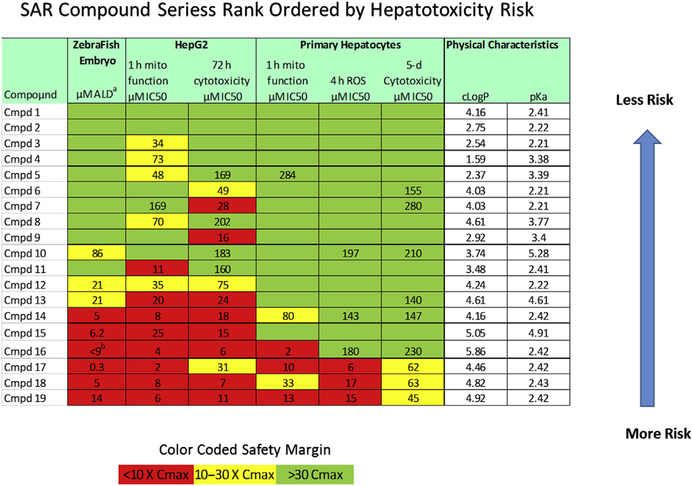Fig. 3.
Case use of multiple “fit-for-purpose” assays to determine hepatotoxicity risk. The concentration of inhibitor in which the response is reduced by half (IC50) results from 6 different assays in zebrafish, HepG2 and primary hepatocytes are used to calculate the safety margin, defined as the toxic IC50 response/Cmax blood concentration. The lower the safety window the higher the risk for hepatotoxicity. To rank-order compounds, the safety margin is categorized into high (red), moderate (yellow), or low (green) risk to generate the heat map. The overall rank order is determined by the number of high and moderate risks. a Acute lethal dose at which one-half of zebrafish embryos are dead by 24-hour exposure. b Drug quantity not sufficient (QNS) to repeat study to calculate safety margin.

